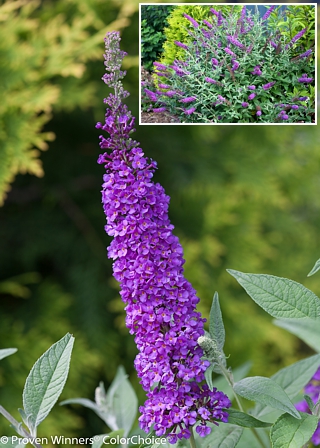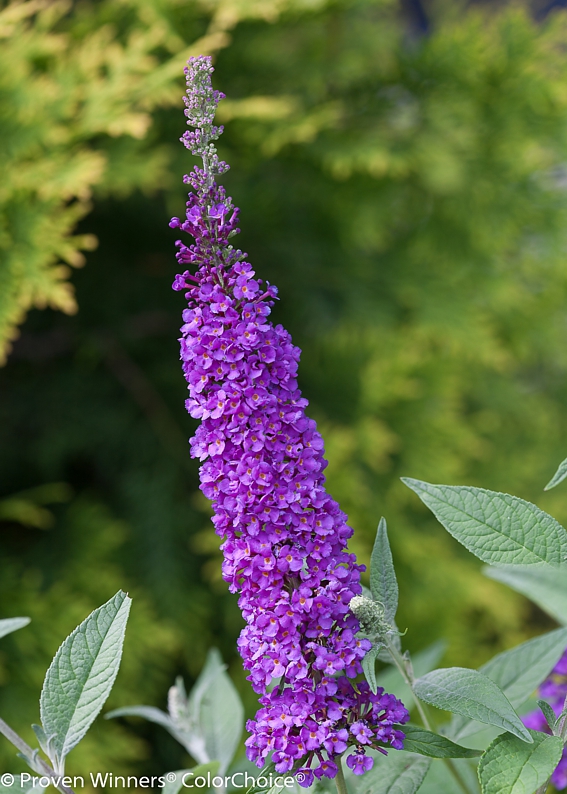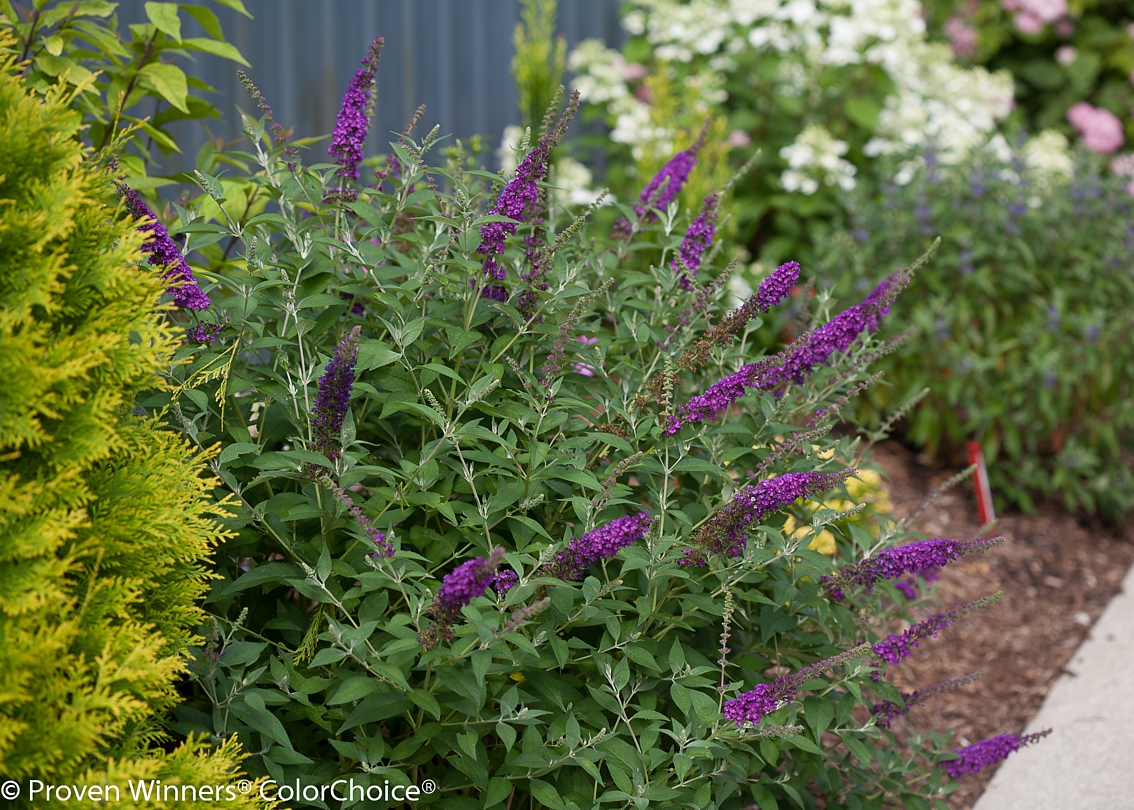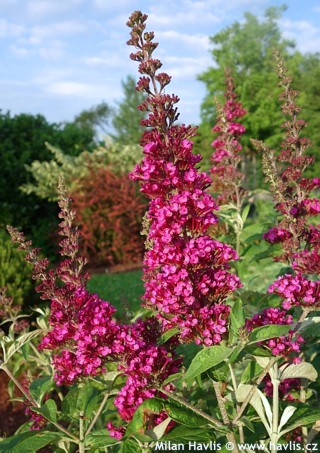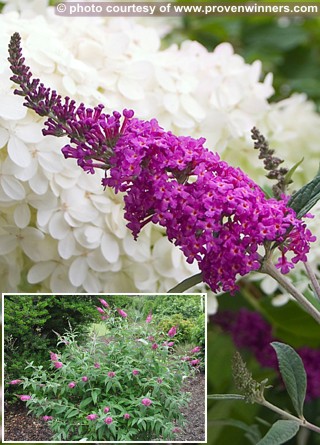Buddleja 'MISS VIOLET' butterfly bush, buddleja
size/type
medium-sized shrub,medium-sized shrub
usual height
1-1,5m
usual width
1-1,5m
leaves
deciduous broadleaf
colour of leaves
flowers
showy
colour of flowers
blooming time
June-September
location
full sun
soil type
any (acidic to alkaline)
soil moisture requirements
evenly moist (dislikes drought)
USDA zone (lowest)
5 (down to -29°C)
winter protection
for zone 5+6

for zone 7

categorized
Buddleja
North Carolina University along with J.C.Raulston Arboretum have a formal breeding program for breeding buddlejas with improved flower colours and habit. There have been quite a few successful varieties including those from the MISS series conducted by Dennis James Werner a Layne Karlton Snelling, the same breeders behind Merlot, the great cercis variety. Buddleja is better known as butterfly bush. The reason is obvious – from early summer when it starts blooming until early autumn it produces large, scented flowers that attract winged insects, mostly butterflies, bee hawk moths, and bumble bees.Description of the plant:
Miss Violet is a compact butterfly bush variety growing about one and a half meters tall and wide, forming a dense, freely flowering shrub. Its rich purple violet flowers are composed in remarkably narrow, 10-15 cm long, sage-like, terminal panicles and open from late June until early September if the weather is sunny and warm. Individual flowers are small funnels with orange throat, very fragrant. Deciduous leaves are lanceolate, pale green to almost blue-green, and slightly hairy. Miss Violet is a cross between Blue Chip and Miss Molly, and patented as PP28448 in 2017. Butterfly bush requires little care apart from annual pruning - cut back all branches leaving only some 10 cm of previous year's growth in early spring. Though you can enhance its appearance by regular deadheading of old panicles - new flowers buds will form faster and the shrub will not show dry panicles with maturing seedpods. Plant it in full sun, in well-drained, humus-rich soil. It will die in boggy soil after winter. It does not demand feeding, yet with a good fertilizer it will be bushier, show deeper colours of both flowers and leaves, and be more floriferous. Though hardy to about -29°C (USDA zone 5) it performs better in warmer zones. For planting in colder areas we recommend buying older plants with woody framework.
Last update 05-10-2020
QUICK PRICE OVERVIEW
CURRENTLY SOLD OUT
WANT TO TRY A SIMILAR PLANT?












